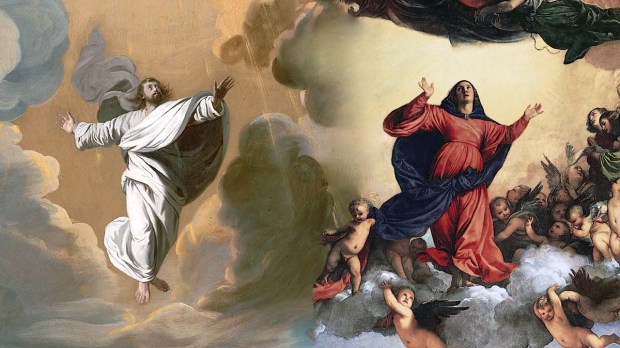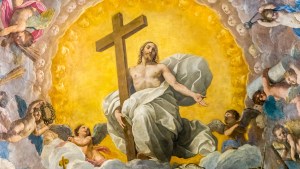In the Catholic Church there are two feasts, one called the “Ascension of Jesus” and the other called the “Assumption of the Virgin Mary.” While both these words indicate going up into heaven, in reality there exists a major difference.
Ascension of Jesus
The Catholic Encyclopedia gives a succinct definition of this first event.
The elevation of Christ into heaven by His own power in presence of His disciples the fortieth day after His Resurrection.
The key phrase in this definition is “by His own power.”
Jesus is God, and that means when he returned to Heaven, he did so through his own abilities and not by any outside force. He was the cause of his ascension, proving again that he is God.
Assumption of the Virgin Mary
On the other hand, the assumption of the Virgin Mary is quite different. She was taken up to Heaven by God’s power and not her own. The Catechism of the Catholic Church gives a brief description.
“Finally the Immaculate Virgin, preserved free from all stain of original sin, when the course of her earthly life was finished, was taken up body and soul into heavenly glory, and exalted by the Lord as Queen over all things, so that she might be the more fully conformed to her Son, the Lord of lords and conqueror of sin and death.” The Assumption of the Blessed Virgin is a singular participation in her Son’s Resurrection and an anticipation of the resurrection of other Christians
CCC 966
She was not the being that raised herself to Heaven. God Himself raised her to be with Him.
It is an important difference, as it recognizes the nature of each individual: Jesus is God and Mary is not.


